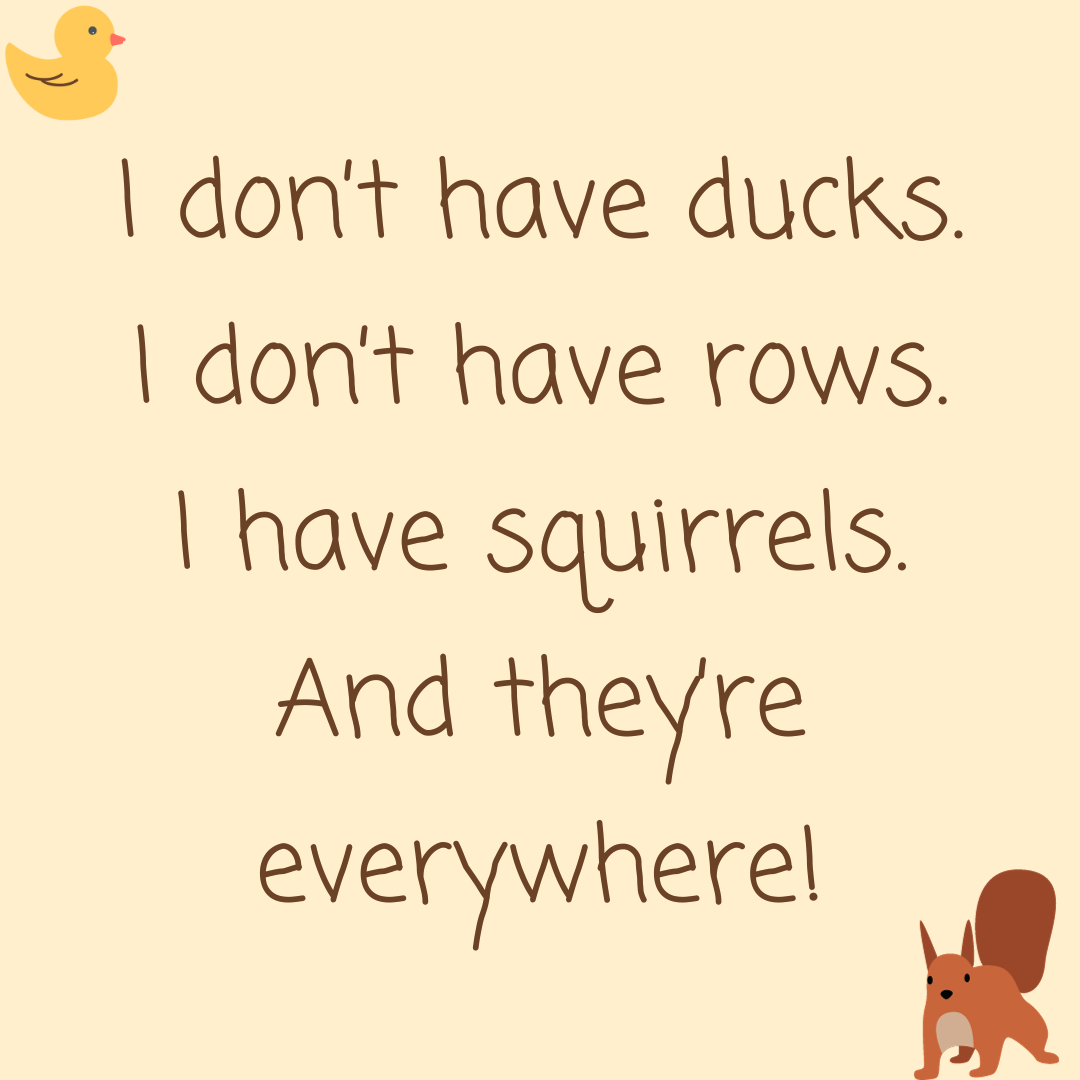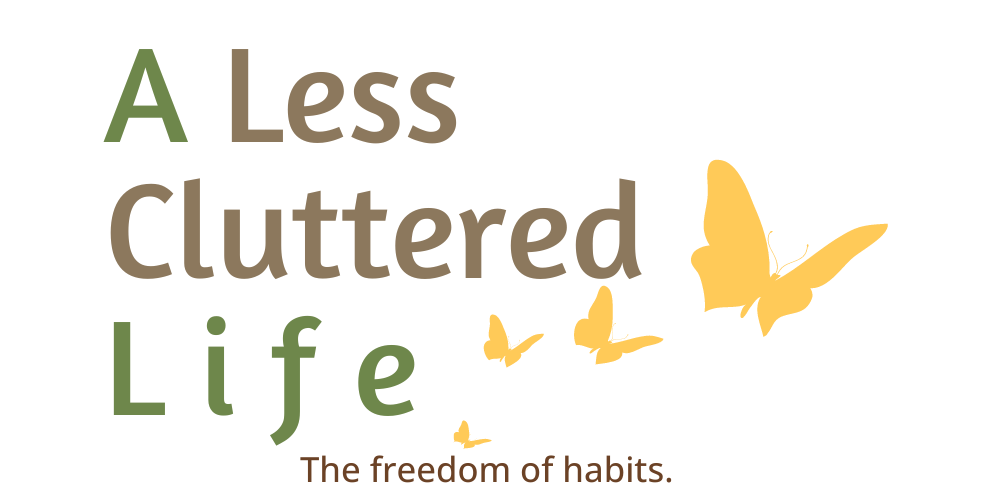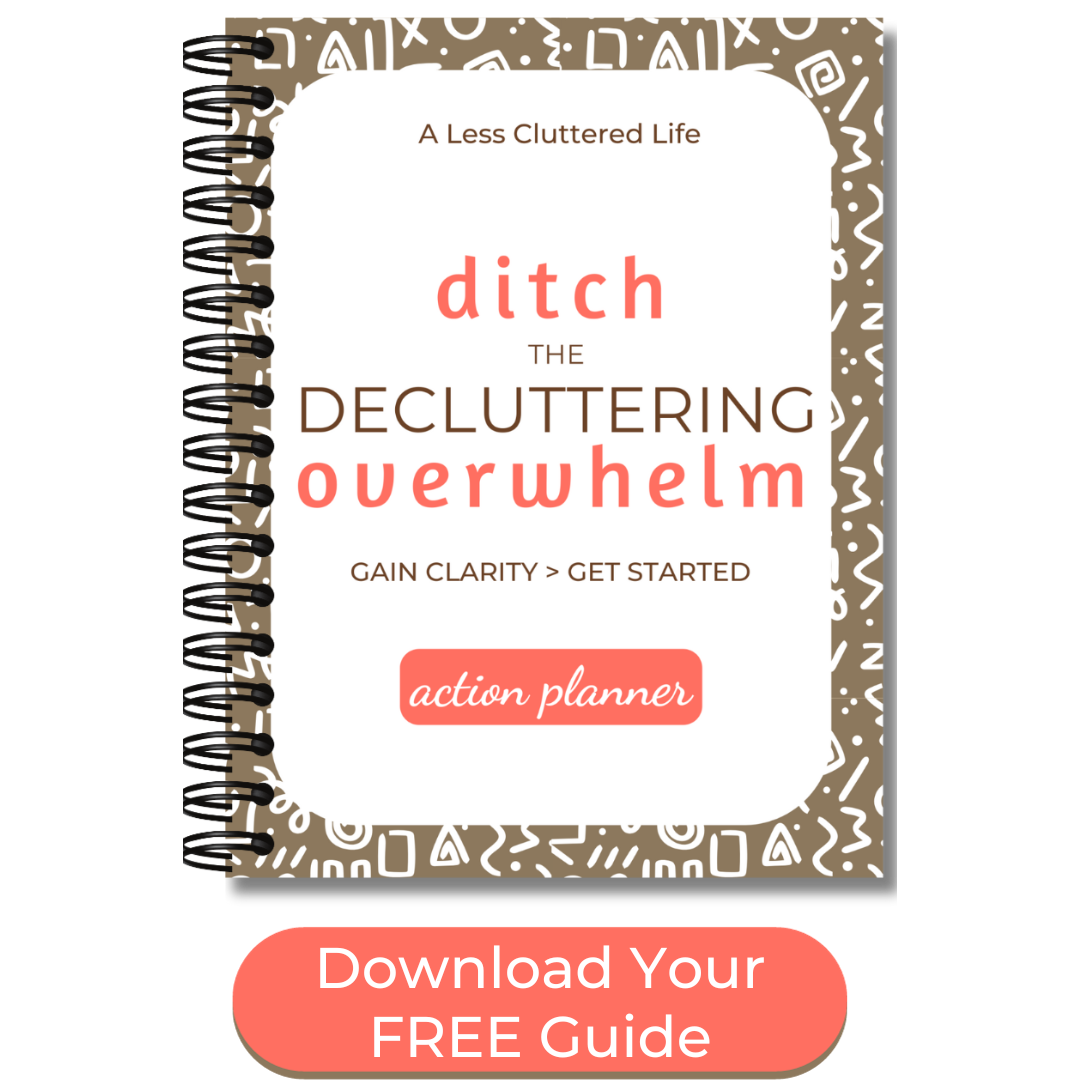|
by Susan McCarthy Are you tired of watching the clutter return to locations around your home that you decluttered not all that long ago? Decluttering isn’t the solution…the steps here will help you figure out what is. Decluttering your home involves a lot of mental and physical energy. And then there’s making the time to declutter. So, there’s nothing more frustrating than watching the clutter return! You may be left with the feeling that you’re a hopeless slob…but chances are that’s not the case. See, for as challenging as decluttering may be, it’s a temporary solution that only clears stuff from the location you decluttered when you did the work. This article isn’t meant to discount your efforts. Decluttering gets the star treatment, being the featured activity that can make a big difference in a relatively short time. However, decluttering doesn’t always ask the important question…why was the clutter here in the first place? What’s the Problem?Before you declutter your kitchen table once again, take a step back and ask, “What’s the problem here?” I know, your first reaction is to focus on the clutter. But let’s look at what the clutter actually is. For example, does the mail and other paperwork that enters the house get dumped here? Is this table your desk when you work from home? Is this where the clean laundry gets piled? Start by looking at your returned clutter and identify what has been set in this spot. Is there a pattern of the same type of stuff being set in the same location over many occasions? So, the problem isn’t just generalized clutter, it’s that specific items are being set in this location for a reason (which is likely “ease” but that isn’t always the case). Ask “Why” Like a Little KidIf you’re thinking, “I drop the mail on the table without going through it. I just shouldn’t do this!” chances are that you’re not going to make any changes that last longer than a day or a few. You want to ask “why” you keep putting the same things in the same (inappropriate) location. Why is this the easy option? The reason may come to you quickly, but if it doesn’t try the Five Why questioning technique that pushes you to get to the root of a situation. The technique is simple and is used by many a young child who’s hoping to change your mind by pointing out that you don’t know why you insist on something. To get the Five Why technique to help, you make a statement, ask why, and then respond. The idea is that by asking why five times, you are undercovering the problem. For my example, “The kitchen table is covered with mail, receipts, and other papers that I carry into the house.” Why does the kitchen table get covered with paperwork that comes into the house? It’s convenient to drop this stuff here. Also, I empty my purse while I’m making dinner. Why is it easier to drop – and leave – papers here than to take care of them. To keep the kitchen looking neater, the recycling bin is out in the entryway where we hang out coats and take off muddy shoes. It feels like a hassle to carry stuff to the bin. Why isn’t there a place to sort the mail and empty my purse in the entryway? And, aha!, the problem reveals itself and it didn’t even take all five whys. In this case, maybe the solution is setting a table over the recycling bin and removing the cover so that it’s easier to sort through papers and drop them right into recycling. Done every day, this would take seconds instead of the hours it takes after the papers are allowed to pile up for a while. Other issues may arise…you now want a spot to put mail that does require an action. And you can resolve that as well. Keep the Solution SimpleThe easier it is to do something the likelier it is that it will get done. A few years back, I kept the cover on my file box because it looked neater than staring at a bunch of file folders. The problem? It was a hassle to unlatch the cover and file the paper. My easy “solution” was to drop the paper on top of the file box cover. Then, of course, it was less convenient to put papers away because I had to worry about the papers and other stuff that piled up on the cover sliding off when I tried to lift the cover a bit. Yes, I was being lazy, not taking off that cover! But the easy solution wasn’t yelling at myself for being lazy (totally demoralizing). Instead, I took off the cover. I could file something in five seconds. And the random stuff that gathered on top of the file box no longer had its drop zone. Oddly, I just started putting away stuff instead of finding another dumping ground. Apparently, I’d broken the habit with the small change. Make your solution convenient. You are leaving things where you do because at some level that’s the easy thing to do. This means that your solution should also be easy. If something isn’t getting done, figure out (perhaps using the Five Why technique) how to make the desired task more convenient. Make your solution obvious. Maybe you decide that the solution to your problem is to drop items into plastic storage baskets that you then put on a shelf. The problem is, even with labels, the baskets all look the same and so it isn’t really obvious to you (or others in your home) where to find things. When they find what they are looking for, they don’t return it to its bin because it was too difficult to find what they were looking for in the first place. Make your solution satisfying. Putting something away with ease is its own short-term reward. The longer an area stays neat, the more satisfying the solution. These simple solutions are from James Clear’s Atomic Habits…and really, this is what you’re doing, forming new habits for staying organized. Be Willing to ExperimentJust as decluttering a location may not have been the answer to the things that pile there, what you come up with as a solution may not work perfectly. Be willing to experiment with your solution. Tweak it a little bit. Or try something completely different. Again, ask why a solution didn’t work and look for the easiest to use option. Staying organized comes down to a couple of core decisions. (1) Make it easy to retrieve something. The more often you use something, the easier it should be to access. For example, the skillet you use multiple times a week should be in a more convenient location than the roasting pan you use twice a year. (2) Make it easy to put something away. Several years ago, I taught specialty art programs at a camp where each counselor was responsible for doing craft project with their nature campers. As the art teacher and an organized person, I would straighten the supply room. We had a lot of reused containers for supplies like pompoms, beads, and ribbon. These containers had covers. If a counselor grabbed some supplies out of a container, when they returned the leftover items, they often just put a pile of craft sticks right on the shelf instead of putting them away. Yeah, I silently raged at the inconsideration of these teens and young adults. And then it occurred to me to remove the covers. The covered containers full of craft supplies looked cute on the shelves. Removing the covers kept the area (marginally) neater. This solution came to me after trying out different size and shape containers, posting “keep this space neat!” signs, and rearranging the supply room. It finally occurred to me to remove the covers. Sometimes, you may realize that you need to move something to a different location or maybe the solution is simpler, like putting a basket near the stairs so you carry those items upstairs when you’re headed in that direction. Maintain OrderDecluttering gives you less stuff to deal with. It clears an area for a moment; however, it doesn’t keep things in order forever. After you declutter a space, make a point of returning to this location to straighten the area. If this is a highly visible location, you may want to do this daily. If you use this stuff all the time, you may also want to tidy here each day or two. If you don’t often go into that drawer or cabinet, give it a quick check each week or so. You may be thinking that this will be a time-consuming hassle. But it’s not. You’re thinking of all the time and effort it took to declutter a location. Maintaining it takes a fraction of that time. Really. It’s much easier to file one or two pieces of paper than it is to deal with a stack containing papers from the past three months. Putting away the clothing from one load of laundry is much easier than folding and hanging the clothing from four loads of laundry. Daily tidy-up. Take a few moments each day to walk around your home and put things away while gathering anything that could get thrown away. This isn’t about cleaning or doing a defined task like putting away the laundry. Reset the room. With this technique, each time you finish in an area, you straighten it to the way you want to find it when you return. For example, resetting your bedroom may involve making the bed and putting dirty clothing in the hamper. Resetting your office could involve clearing the surface of your desk and carrying any dirty glasses or mugs to the kitchen. These momentary actions keep order and save you from doing a major decluttering of a spot that you’ve already cleared and organized. Decluttering Isn’t the SolutionDecluttering is useful to clear excess items and clear a space. But if we overlook that we live in our homes and that things come in (and go out) and get used and shifted around, we can see that decluttering isn’t a solution for maintaining order.
When clutter returns to an area you can do some problem solving so you can clear a space and keep it neat.
Keep in mind that regular maintenance takes much less time that sorting through months or years of stuff that has piled up.
0 Comments
Your comment will be posted after it is approved.
Leave a Reply. |
Categories
All
Hi, I'm SusanI'm a former teacher who became a professional organizer (and not because I'm a natural-born neatnik). I live with my husband and fluffy cat on a river in Massachusetts. I crochet, make handmade cards, and love reading young adult novels. Learn more about my decluttering journey here. |
|
Copyright 2024 Susan McCarthy - Susan@ALessClutteredLife.com -
Privacy Policies |
Proudly powered by Weebly

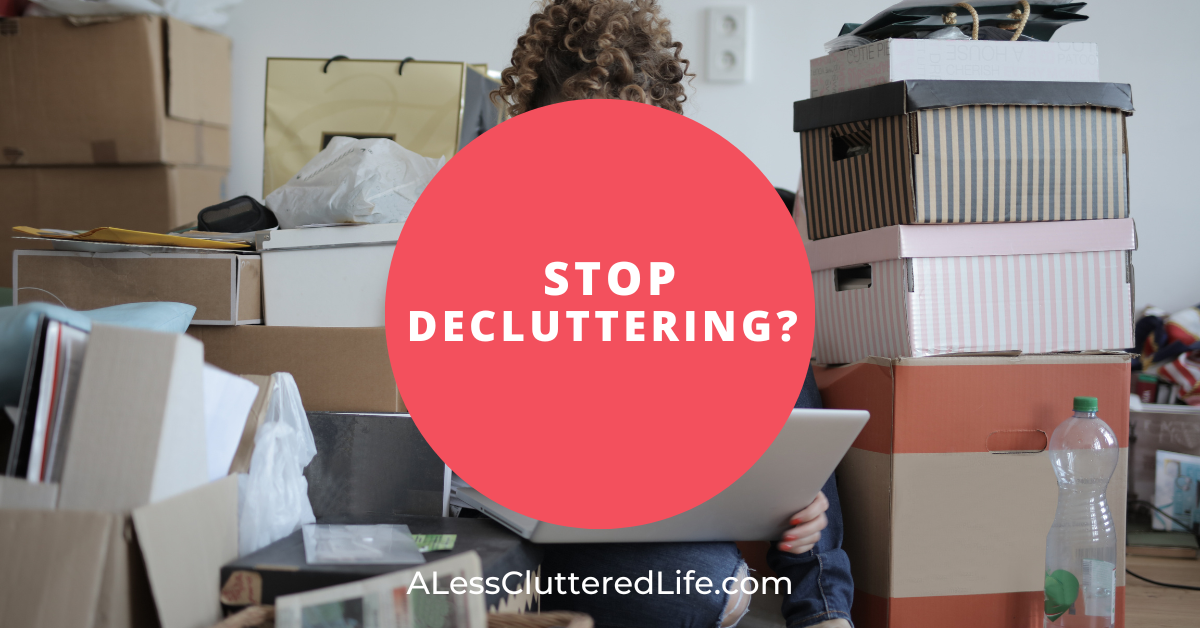
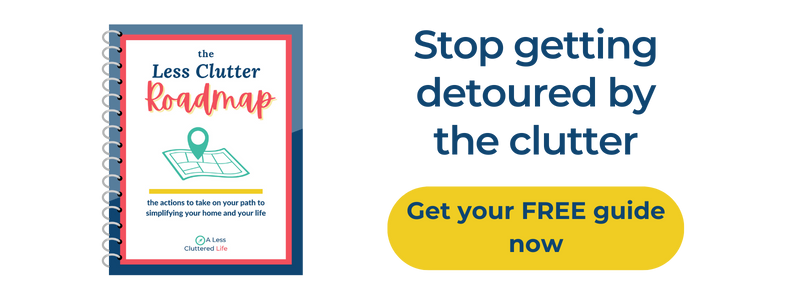
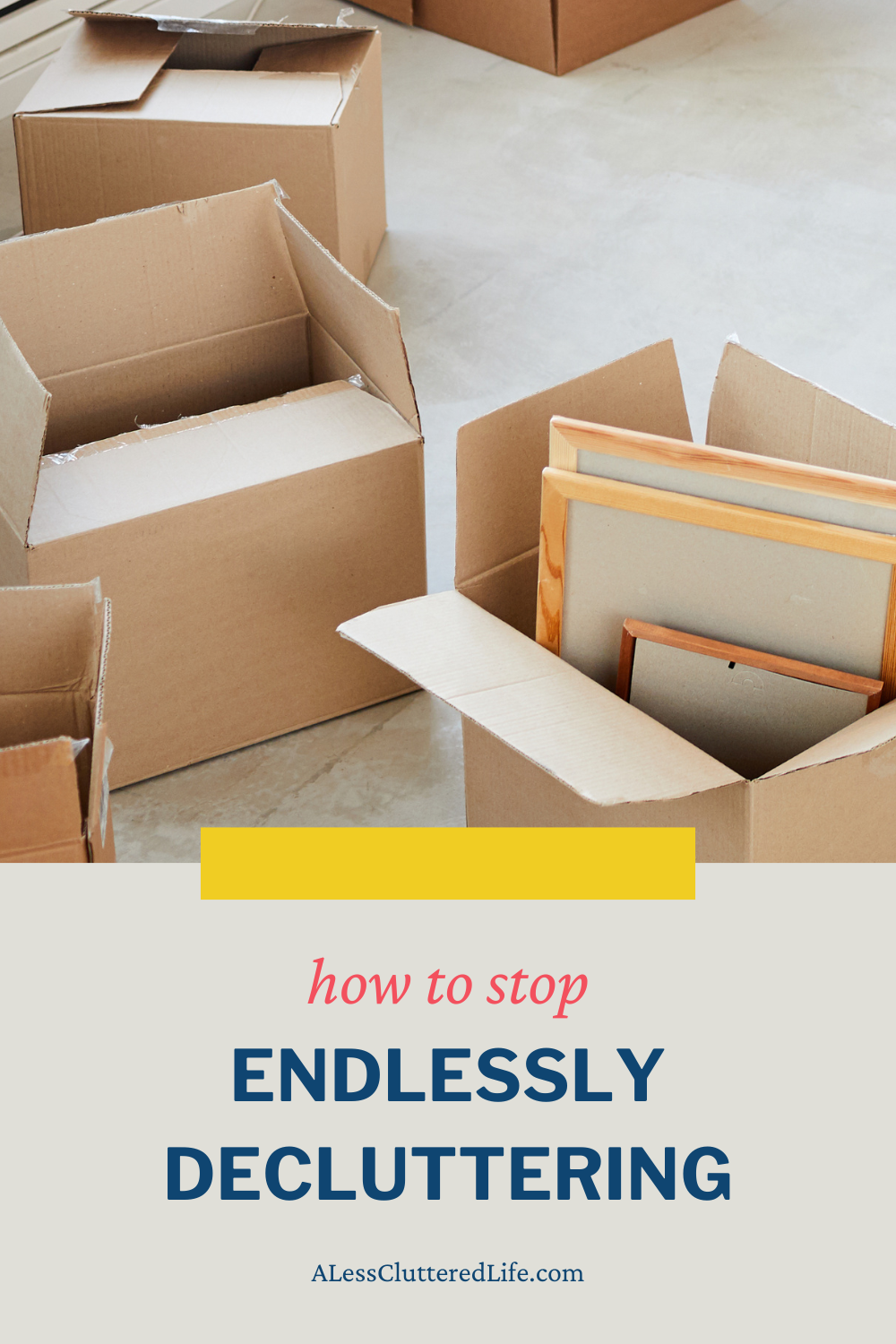
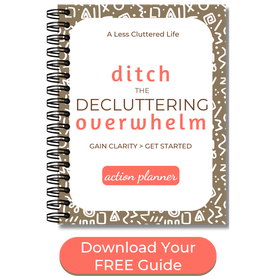

 RSS Feed
RSS Feed
